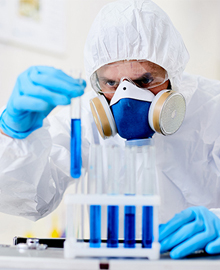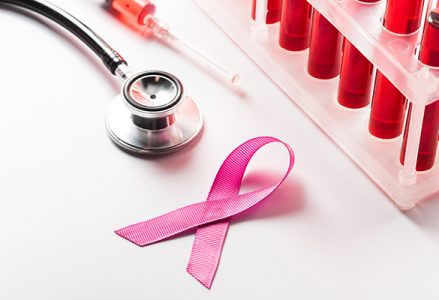Sarmscentral is a leading online retailer specializing in high-quality Selective Androgen Receptor Modulators (SARMs). Our mission is to provide athletes, bodybuilders, and fitness enthusiasts with the best possible products to help them achieve their goals.
- SARMS
- SERMS & PCT
About
View MoreSarmscentral is a leading online retailer specializing in high-quality Selective Androgen Receptor Modulators (SARMs). Our mission is to provide athletes, bodybuilders, and fitness enthusiasts with the best possible products to help them achieve their goals.
Latest Blog

- PROHORMONES
About
View MoreSarmscentral is a leading online retailer specializing in high-quality Selective Androgen Receptor Modulators (SARMs). Our mission is to provide athletes, bodybuilders, and fitness enthusiasts with the best possible products to help them achieve their goals.
Latest Blog

- AAS
About
View MoreSarmscentral is a leading online retailer specializing in high-quality Selective Androgen Receptor Modulators (SARMs). Our mission is to provide athletes, bodybuilders, and fitness enthusiasts with the best possible products to help them achieve their goals.
Latest Blog

- PEPTIDES
About
View MoreSarmscentral is a leading online retailer specializing in high-quality Selective Androgen Receptor Modulators (SARMs). Our mission is to provide athletes, bodybuilders, and fitness enthusiasts with the best possible products to help them achieve their goals.
Latest Blog

- NOOTROPIC
About
View MoreSarmscentral is a leading online retailer specializing in high-quality Selective Androgen Receptor Modulators (SARMs). Our mission is to provide athletes, bodybuilders, and fitness enthusiasts with the best possible products to help them achieve their goals.
Latest Blog

- OTHER COMPOUNDS
About
View MoreSarmscentral is a leading online retailer specializing in high-quality Selective Androgen Receptor Modulators (SARMs). Our mission is to provide athletes, bodybuilders, and fitness enthusiasts with the best possible products to help them achieve their goals.
OTHER COMPOUNDS
Latest Blog

Transdermal solutions typically refer to pharmaceutical formulations designed for administration through the skin. These solutions are composed of drugs or therapeutic substances that can be absorbed through the skin and enter the bloodstream.
Introduction:
Transdermal solutions offer several advantages such as non-invasive administration, controlled release, and reduced side effects. They are commonly used for delivering medications like pain relievers, hormones, nicotine replacement therapy, and certain cardiovascular drugs.
 1-Andro Transdermal – Buy from Behemoth Labz
1-Andro Transdermal – Buy from Behemoth Labz
Product Information – Transdermal Solutions:
Medications that are designed to have clinical effects at distant or deeper tissue sites require a specific transdermal vehicle. These vehicles, such as gels, patches, and films, typically include one or more chemical penetration enhancers to increase transdermal penetration and achieve the desired outcome.
With the advancements in modern technology, a large number of transdelivery systems are available on the market for the delivery of hydrophobic and hydrophilic drugs and macromolecules. Transdermal delivery has several advantages over other administration routes, such as eliminating frequent dosing and allowing for the delivery of short half-lived drugs (by avoiding hepatic first-pass metabolism). {R}
Transdermal drug delivery systems come in various forms. Some key components and types of transdermal solutions include:
Transdermal Patches: These are adhesive patches containing a reservoir or matrix of medication. The patch is applied to the skin, and the drug penetration gradually occurs over time, penetrating the skin and entering the bloodstream. This sustained release allows for a more controlled and steady delivery of the drug.
Transdermal Gels: These are gel-based formulations that contain the active ingredient(s) for transdermal absorption. The gel is applied to the skin, and the drug is absorbed through the skin barrier. Gels are often used when a more fluid consistency is desired compared to patches.
Transdermal Creams: Similar to gels, transdermal creams contain active ingredients for absorption through the skin. Creams have a thicker consistency compared to gels and may be used when a more emollient formulation is preferred.
Transdermal Sprays: Some medications are formulated as sprays for transdermal administration. These sprays are applied to the skin and are designed to be absorbed into the bloodstream.
Transdermal Solutions for Iontophoresis: Iontophoresis involves using a low electric current to enhance the delivery of drugs through the skin. Transdermal solutions used for iontophoresis are often electrolyte solutions containing the drug of interest.
How Do Transdermal Solutions Work?
Transdermal solutions work by delivering drugs or therapeutic substances through the skin and into the bloodstream. The skin is a complex barrier designed to protect the body from external elements, and its outermost layer, the stratum corneum, is the primary obstacle to drug absorption. Transdermal solutions employ various mechanisms to overcome this barrier and facilitate drug absorption:

image source: https://en.wikipedia.org/wiki/Transdermal
Passive Diffusion: The most common mechanism for transdermal drug delivery is passive diffusion. In this process, the drug in the transdermal solution moves from an area of higher concentration (in the solution or patch) to an area of lower concentration (in the skin and eventually the bloodstream). The stratum corneum, despite being a barrier, is somewhat permeable to certain drugs, especially those with specific physicochemical properties. {R}
Enhanced Permeation: Some transdermal solutions include permeation enhancers that temporarily alter the properties of the stratum corneum, making it more permeable to the drug. These enhancers may increase skin hydration, disrupt lipid structures in the skin, or facilitate the movement of the drug through the skin. {R}
Iontophoresis: This technique involves the application of a low electrical current to the skin. The electric field created helps drive charged drug molecules through the skin. Iontophoresis is often used for drugs that have difficulty penetrating the skin barrier on their own. {R}
Chemical Enhancers: Certain chemical compounds can enhance drug permeation by interacting with the skin’s lipids or proteins. These chemical enhancers are included in the formulation to improve drug absorption. {R}
Microemulsions and Nanoemulsions: The transdermal route may utilize microemulsions or nanoemulsions to enhance drug solubility and skin penetration. These are formulations with small droplet sizes that can improve the delivery of lipophilic drugs. {R}
Transdermal Patches: In the case of transdermal patches, the drug is contained in a reservoir or matrix within the patch. The patch is applied to the skin, and the drug is released gradually. The patch serves as a controlled-release system, allowing for a sustained and consistent delivery of the drug. {R}
Benefits:
Transdermal solutions, which are substances delivered through the skin, offer several benefits compared to other methods of administration, such as oral or intravenous. Here are some advantages of transdermal solutions: Cutz 2.0 Transdermal (SR-9009 + Yohimbine +Cardarine) – Buy from Pure Rawz
Cutz 2.0 Transdermal (SR-9009 + Yohimbine +Cardarine) – Buy from Pure Rawz
1. Non-invasive Delivery:
Transdermal solutions provide a non-invasive method of drug delivery, avoiding the need for injections or swallowing pills. This can improve patient compliance, especially for individuals who may have difficulty with traditional forms of medication. {R}
2. Steady and Controlled Release:
Transdermal patches or gels can provide a controlled and sustained release of medication over an extended period. This helps in maintaining a steady concentration of the drug in the bloodstream, which can be particularly beneficial for drugs that require constant levels for optimal efficacy. {R}
3. Reduced Side Effects:
By bypassing the digestive system and delivering drugs directly into the bloodstream, transdermal solutions can help reduce gastrointestinal side effects associated with oral medications. This route also avoids first-pass metabolism in the liver, potentially leading to a lower incidence of side effects. {R}
4. Convenience and Comfort:
Transdermal solutions are often more convenient for patients, as they eliminate the need for frequent dosing. Patches, in particular, can be applied once or twice a day, providing a sustained release of medication. This can improve patient comfort and quality of life. {R}
5. Improved Bioavailability:
A transdermal drug delivery system can enhance the bioavailability of certain drugs by avoiding the challenges of absorption in the gastrointestinal tract. This can be particularly advantageous for drugs that have low oral bioavailability. {R}
6. Avoidance of Digestive Enzymes:
Some other types of solutions deliver drugs that are susceptible to degradation by digestive enzymes in the stomach or liver. Transdermal delivery allows these drugs to bypass these enzymatic barriers, leading to a more efficient delivery to the bloodstream. {R}
7. Reduced Risk of Hepatic First Pass Metabolism:
Transdermal delivery systems can help bypass the liver’s first-pass metabolism, which is the process where a significant portion of an orally administered drug is metabolized before reaching the systemic circulation. This can enhance the bioavailability of certain drugs. {R}
8. Customizable Dosage:
Transdermal patches can be designed to deliver a specific dosage over a specified duration, allowing for customization based on the patient’s needs. This precision can be particularly beneficial for drugs with a narrow therapeutic window.
However, while transdermal drugs offer these advantages, they may not be suitable for all types of drugs or medical conditions. The effectiveness of transdermal delivery depends on factors such as the drug’s properties, molecular size, and the permeability of the skin. Additionally, patient factors, such as skin condition and individual variability, can influence the success of transdermal drug delivery. {R}
Side Effects
Topical drug delivery, like any medication, can potentially cause side effects. Here are some general considerations regarding the potential side effects of transdermal solutions:
Local Skin Reactions:
Irritation such as redness, itching, or irritation at the application site is a common side effect.
Erythema: Skin redness.
Developing edema or swelling at the site of application or rashes across the skin is another side effect that can occur due to transdermal solutions.
Cardiovascular Effects:
Changes in Blood Pressure: Certain medications that enable transdermal delivery through patches, especially those for cardiovascular conditions, may affect blood pressure.
Allergic Reactions:
In rare cases, individuals may be allergic to components of the transdermal solution, leading to more generalized reactions such as hives or difficulty breathing.
Moreover, headaches, nausea, or vomiting are all effects that can be caused by transdermal medications.
Dosage:
 RU-58841 [Transdermal Liquid] – Buy from RCD.Bio
RU-58841 [Transdermal Liquid] – Buy from RCD.Bio
Dosage varies between various products as it is dependent on the type of solution and the product being used. Various products available include 1-Andro Transdermal, RU-58841 [Transdermal Liquid], or stacks such as Cutz 2.0 Transdermal (SR-9009 + Yohimbine +Cardarine).
Where to Buy Transdermal Solutions Online?
1-Andro Transdermal – Buy from Behemoth Labz
The best sites for buying Transdermal Solutions and other nutritional supplements and medications online are Pure Rawz and RCD.Bio and Behemoth Labz. To be the best suppliers of research chemicals, all the 3 online stores provide reference materials with every product they sell.









